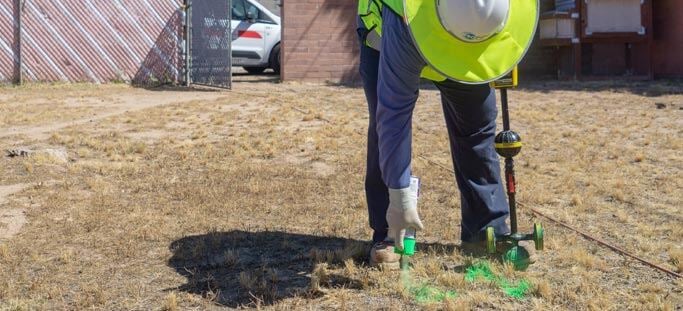Spring Infrastructure Checklist: Sewer and Utility Inspections to Schedule Now

As winter gives way to spring, it’s the perfect time for municipalities, utilities and commercial property managers to evaluate their underground infrastructure. Seasonal freeze-thaw cycles, ground shifting and increased rainfall can accelerate the deterioration of sewer systems, utility lines and critical underground assets. Left unchecked, minor issues can escalate into major failures, causing service disruptions, environmental violations and costly emergency repairs.
Proactively scheduling inspections and maintenance now can help prevent unexpected breakdowns and ensure reliable operations during the busy months ahead. This spring infrastructure checklist highlights the essential sewer and utility inspections you should consider to protect your systems and investments.
Sewer Lateral Inspection
Sewer lateral inspections are a key step in identifying early warning signs of damage. Winter conditions often lead to cracks, joint separation or root intrusion in laterals, increasing the risk of backups and infiltration/inflow (I&I) issues as spring rains arrive.
A thorough sewer lateral inspection can reveal hidden problems, while cross bore inspections help detect potentially dangerous intersections between sewer laterals and gas lines. Proactively addressing these issues reduces the risk of sanitary sewer overflows (SSOs) and costly emergency repairs.
For example, a small crack found during a sewer lateral inspection can be addressed using trenchless sewer repair techniques like cured-in-place pipe (CIPP) lining, preventing the need for costly excavation later on.
Manhole Inspection
Manholes are critical access points for municipal and private sewer systems, and their condition directly impacts system performance. Spring rains can exacerbate any existing weaknesses, causing inflow and infiltration that overwhelm sewer capacity and drive up treatment costs.
Routine manhole inspections assess structural integrity, detect corrosion and identify joint failures before they become more serious problems. Regular inspections not only prevent further deterioration but also help municipalities comply with regulations governing SSOs and system performance standards.
CIPP Lining & Sewer Liner Repair
Spring is an ideal time to schedule CIPP lining projects. This trenchless method restores pipe integrity without the disruption of traditional excavation. CIPP lining creates a seamless, corrosion-resistant liner within the existing pipe, extending the lifespan of sewer mains and laterals by 50 years or more.
Planning ahead allows municipalities and utilities to take advantage of available scheduling before demand peaks later in the year. It’s also a good time to evaluate cured in place pipe cost and secure funding for rehabilitation projects. Compared to traditional dig-and-replace methods, CIPP lining offers significant cost savings by reducing labor expenses and eliminating the need for surface restoration.
For pipes requiring immediate attention, sewer liner repair provides a cost-effective solution that restores flow capacity and structural integrity. If extensive damage is found during a sewer lateral inspection, trenchless sewer repair methods like pipe bursting or full-length CIPP lining can deliver reliable results with minimal disruption.
Utility Locating and Underground Mapping
Before spring and summer construction ramps up, accurate utility locating services are critical to preventing costly utility strikes and project delays. While 811 locates offer an important first step, they often only cover public utilities. Adding private utility locating services ensures a complete understanding of underground assets on private property and project sites.
Combining these services with ground penetrating radar surveys delivers high-resolution data for more accurate underground mapping. Detailed maps support safe excavation, horizontal directional drilling (HDD) and future maintenance planning by identifying all existing utilities.
Test Pitting
When precise utility verification is required, test pitting provides an effective solution. This method involves carefully excavating small areas to confirm the exact location, depth and condition of utilities identified during utility locating services or underground mapping efforts.
Test pitting reduces uncertainty and ensures the accuracy of subsurface utility information, making it a critical step before any excavation or HDD work. It also enhances safety by preventing accidental utility strikes and minimizing risk to workers on-site.
SSES (Sanitary Sewer Evaluation Studies) and Sewer Mapping
Comprehensive SSESs are essential for identifying sources of I&I, helping municipalities prioritize repairs and rehabilitation projects. These evaluations assess sewer line conditions, detect leaks and determine areas of excessive inflow that can overload treatment facilities.
Pairing SSES studies with detailed sewer mapping provides a complete picture of your system’s condition and supports proactive asset management. With accurate data, municipalities can develop long-term plans that extend the life of their sewer infrastructure and reduce costly emergency responses.
Conclusion
Spring marks the start of the construction season, making it the ideal time to assess and maintain underground infrastructure. Proactively scheduling sewer lateral inspections, manhole inspections, CIPP lining, utility locating services and other assessments helps municipalities and utilities avoid costly emergencies and maintain system integrity year-round.
By taking action now, infrastructure owners can avoid peak-season delays, secure funding and improve system reliability before the demands of summer construction and rainfall intensify.
National Underground Group offers a full suite of inspection, locating and rehabilitation services to help safeguard your critical infrastructure this season.
Schedule Your Spring Inspections with National Underground Group
Get ahead of potential issues this season. Contact us today to plan your spring sewer and utility inspections.
